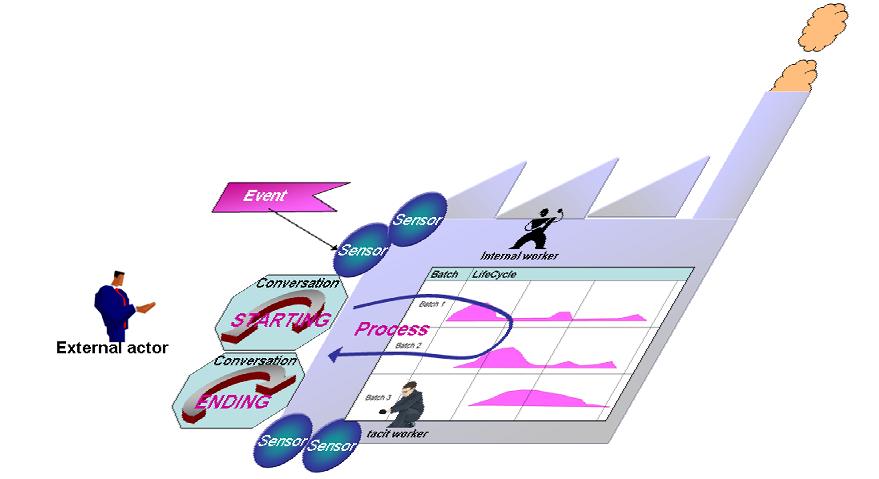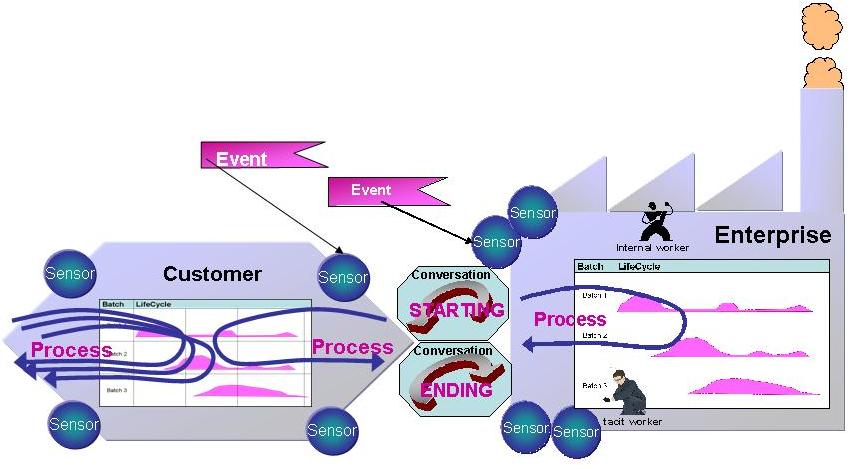In the 80’s and the 90’s, information systems viewed the world as enterprise centric. All business facts and events the enterprise ought to manage, were entered into the system by employees or captured by technical equipements like sensors.
By these times, enterprises were compared to complex living systems made of people and machines. They need at the same times programs and psychology, that was in short the H A Simon point of view when he work out the decision process. Information systems should support all aspects of the enterprise brain, especially they should cater for a virtual machine which help to understanding events, to taking the right decision, to leading the required operations. This cannot be achieved without dealing with the question of reality representation. Beside technology, this is the main question addressed by researchers and developers.
Objects provided an efficient paradigm, widely adopted by computing industry, for building enterprise concepts representation. Because objects allow static and dynamic representation at the same time, computing systems may be viewed as logic machines catering for all technical services required for objects management.
Objects allow to hard code how parts of enterprise environment behave and how organic parts of enterprise should react, according to the enterprise understanding. The addition of the enterprise objects model with the employees knowledge constitute the enterprise intelligence , capabilities and know-how.
All these ideas are around for years.

Enterprise detects events. Some unattended, in this case an employee, a tacit worker, analyse and define how the enterprise should react. In the other cases, the rules to detect and analyse the event are codified and may performed by an internal worker.
Then, in accordance to events interpretation, enterprise start interactions with external actors which, when they are complex, may be full conversations. The following is the roll out of internal processes to fulfil external actor request, which, at last, leads to the ending conversation at the delivery and payment time. This is more or less the model developed by ANSA in the 90’s.
In 2000, when eBusiness bubble inflated, customisation was all the rage. The customer was not view as one among other concepts surrounding enterprise but like a complex system hosting processes as well.

The question of environment understanding evolves from a punctual view of interactions to an holistic one. The real question become how to synchronise customer processes with enterprise processes. This was the time of customer care and customer relationship management. But the approach remained enterprise centric, all the views were for the benefit of the enterprise or in direction of customers through the benefit of the enterprise.
Now computing industry is trying to climb an higher step. The world is no longer viewed as enterprise centric but as a whole, hosting peer-to-peer interactions between agents which may put on different roles : customers, providers, regulators, contractors, and so on.

The enterprise view universe as the location of social interactions. This is the Enterprise 2.0 era. All these, not only witnesses a mental revolution, but also a huge technological progress which sustains innovations in systems modelling and supporting agent interactions.
How the enterprise should step in this train and handle a new way of being, it is the enterprise architect very challenge!

Bring your genius to the O table and share, cooperate with ONE another in co-creating and co-designing systems of utopia.